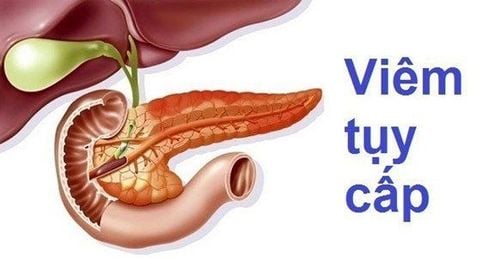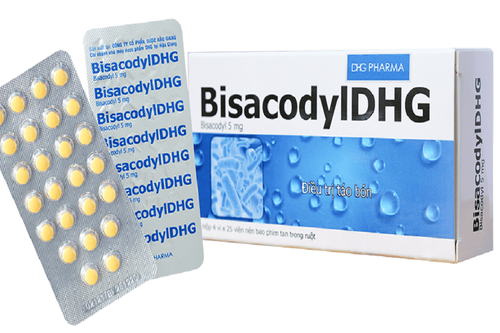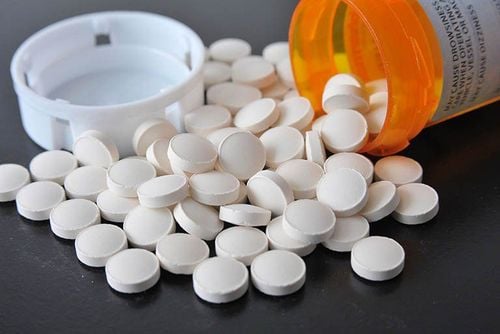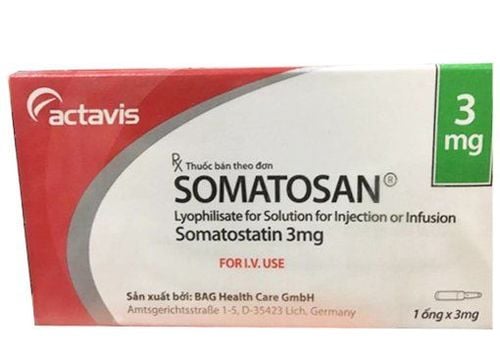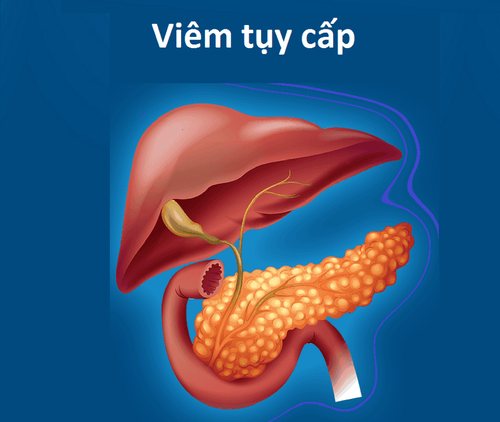This is an automatically translated article.
The article is professionally consulted by Master, Specialist II Phan Thi Minh Huong - Gastroenterologist - Department of Medical Examination & Internal Medicine - Vinmec Danang International General HospitalAcute abdominal pain is one of the typical symptoms and is associated with 80% of gastrointestinal diseases. Symptoms of acute abdominal pain can be a warning sign of a dangerous condition that requires emergency care, but can also be caused by digestive disorders and resolve on their own.
1. Acute abdominal pain
Abdominal pain is a common symptom, 80% of cases related to gastrointestinal diseases have symptoms of abdominal pain. The nature of abdominal pain is often very diverse such as:
Abdominal cramps Long-lasting dull pain, intermittent sharp pain,... Abdominal pain is often divided into 2 types: acute abdominal pain and chronic abdominal pain.
2. Acute abdominal pain when to go to the emergency room?
Acute abdominal pain is one of the forms of abdominal pain, abdominal pain comes on suddenly and lasts no more than 2 weeks. This can be a warning symptom of a dangerous condition that needs to be treated promptly, besides, abdominal pain can also be caused by digestive disorders.Acute abdominal pain is dangerous: some diseases have acute abdominal pain such as: Intestinal infections, when the patient is accompanied by other symptoms including: high fever and loose stools, bloody mucus, Severe cases may be accompanied by hypotension, septic shock. Perforate hollow viscera if the patient has severe abdominal pain accompanied by other symptoms such as abdominal distension, vomiting and inability to defecate. Patients need to go to medical facilities for examination and intervention as soon as possible. Acute abdominal pain is not dangerous: it may be a digestive disorder caused by food poisoning. Patients have symptoms of intermittent abdominal pain, vomiting, diarrhea, fever. In these cases, the abdominal pain can resolve on its own, then the patient needs nutrition and adequate rehydration. However, in the case of high fever and bloody stools are signs of infection, the patient should be examined and prescribed antibiotics. Cases of diarrhea, vomiting many times, especially accompanied by low blood pressure need to be hospitalized for treatment.
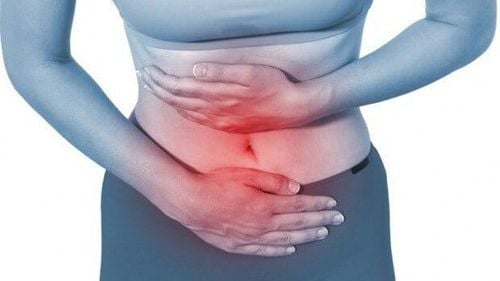
Đau bụng là một triệu chứng thường gặp và 80% các trường hợp có liên quan đến bệnh lý đường tiêu hóa có biểu hiện triệu chứng đau bụng
3. Some common diseases have symptoms of abdominal pain
3.1 Acute appendicitis Appendicitis is an acute disease that can occur at any age, causing many dangerous complications, even death, if not treated promptly. The typical symptom of appendicitis is abdominal pain. Abdominal pain will appear in the epigastrium and then spread to the right iliac fossa, then cause dull, continuous and increasing pain, the nature of the pain is cramping and sharp. May be accompanied by fever, vomiting, loss of appetite.3.2 Acute pancreatitis Acute pancreatitis has a typical symptom that is severe pain in the epigastrium just below the nose of the sternum, which does not subside after vomiting. The most common cause of acute pancreatitis is gallstones or worms. Patients often have pain that comes on suddenly, after a hearty meal, and within a few minutes reaches intense pain intensity. Abdominal pain in acute pancreatitis can last up to several days.
Abdominal pain often increases when the patient has strong pressure such as coughing, vigorous movement or deep breathing. In addition, symptoms associated with acute pancreatitis include:
Stomach bloating Increased pain sensation in the abdominal wall Vomiting Fever Prolonged acute pancreatitis can cause dehydration, low blood pressure. In more severe cases of acute pancreatitis, it can lead to acute kidney failure, heart and lung dysfunction, hypovolemia, and sepsis, even death.
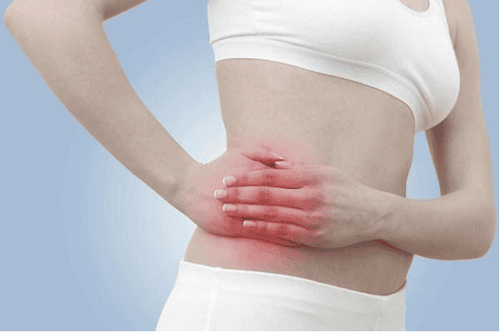
Viêm ruột thừa là bệnh cấp tính có thể gặp ở mọi lứa tuổi khác nhau, gây ra nhiều biến chứng nguy hiểm
Nausea; Vomiting a lot, vomiting right after eating, vomiting all food, vomit with sour liquid, even with blood; After vomiting, abdominal pain decreased. The cause of acute gastritis is a bacterial infection in the stomach lining (H.pylori bacteria) or the effect of agents that damage the stomach lining such as non-steroidal anti-inflammatory drugs (NSAIDs), alcohol, and alcohol. Stress, bile reflux, substance use, disease, autoimmune disorders, ..). Acute gastritis can lead to a series of serious problems such as stomach bleeding, dehydration, kidney failure... so patients need to see a doctor for timely treatment.
3.4 Kidney stones - ureteral stones with renal colic Symptoms of renal colic: The patient has pain in the lumbar ribs on one or both sides with sharp, sudden pain, starting from the posterior lumbar region. that spread anteriorly along the line below the ribs and spread to the external genitalia, lying down does not help, taking pain relievers, reducing smooth muscle spasms. But sometimes the pain of renal colic is not obvious, the patient only feels heaviness, pain and discomfort in the lower back (one or both sides), pain increases when moving. In addition, there are accompanying symptoms such as urinary urgency, dysuria. Abnormal urine color and even blood in the urine.
For small stones that may not require treatment, the patient can drink plenty of water to push the stones out. If the patient does not recover, surgery is required. It is necessary to prevent other complications such as: recurrent stones, urinary tract infections, pyelonephritis leading to kidney failure, sepsis and septic shock.
3.5 Gynecological diseases Acute lower abdominal pain can be a symptom of gynecological diseases, stemming from many different causes. Patients often have symptoms such as:
Lower abdominal pain; pain that radiates down the vulva; Burning sensation; Pain in the bladder area; Painful urination, difficulty urinating; Rectal pain; Feeling of wanting to defecate; Vaginal itching. In addition, some gynecological diseases will have symptoms that are often more difficult to detect and less visible to the outside, such as:
Damage to the cervix; Injury to the uterine body: posterior flexion of the uterus, uterine torsion, uterine fibroids, and necrosis; Genital prolapse ; Chronic adnexitis; Inflammation of the sacrum or ovaries; Endometrial optimism ; Varicose veins of the pelvis,...

Đau bụng dưới cấp tính có thể là triệu chứng của những bệnh phụ khoa
In summary, acute abdominal pain is a symptom of many different diseases. To classify and recognize a dangerous condition depends on its nature and other accompanying symptoms. When acute abdominal pain occurs and is accompanied by unusual signs and symptoms, the patient should immediately go to a medical facility for examination and appropriate treatment measures. Currently, Vinmec International General Hospital is a prestigious address trusted by many patients in performing diagnostic techniques for digestive diseases causing abdominal pain, diseases causing chronic diarrhea, Crohn's disease... Along with that, at Vinmec Hospital, screening for stomach cancer and gastric polyps is done through gastroscopy with Olympus CV 190 endoscope, with NBI (Narrow Banding Imaging) function. narrow light) for clearer mucosal pathological analysis results than conventional endoscopy, detecting ulcerative colitis lesions, early gastrointestinal cancer lesions...
Disease Vinmec Hospital with modern facilities and equipment and a team of experienced experts, always dedicated to medical examination and treatment, customers can be assured of gastroscopy and esophagogastroduodenoscopy services here. .
Please dial HOTLINE for more information or register for an appointment HERE. Download MyVinmec app to make appointments faster and to manage your bookings easily.




